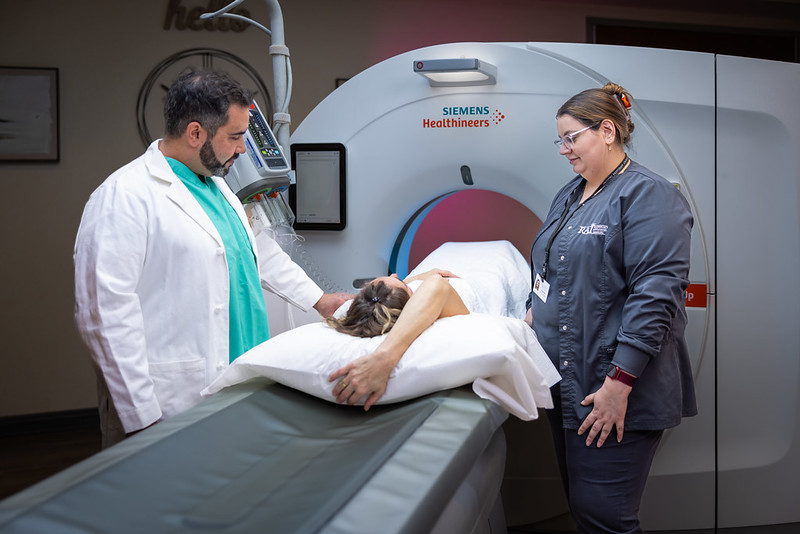Understanding Outpatient Imaging
Understanding Outpatient Imaging
Your Imaging. Your Choice.
With household financial pressures and rising insurance costs, the need to be financially savvy is critical. Fortunately, patients have choices. You can choose physicians, imaging centers and hospitals based on quality care, affordability and convenience. We invite you to understand the difference between independent outpatient centers and hospitals for radiology procedures.


QUALITY
Selecting a radiology facility known for its radiologist’s expertise and patient-centered care significantly improves overall experience and outcomes.

AFFORDABILITY
Understanding the financial impact of radiology procedures at various facilities is vital for budget-conscious patients.

INSURANCE
Factoring in insurance coverage aids patients in navigating costs and assessing radiology services effectively.
QUALITY & EXPERIENCE
At RAI, we prioritize advanced technology to ensure accurate patient results. Our highly trained radiologists collaborate with state-of-the-art software and artificial intelligence (AI) to deliver precise diagnoses. Our imaging quality consistently exceeds the high standards of the American College of Radiology.


HOSPITAL

OUTPATIENT CENTER

EXPERTISE
In both hospital and outpatient settings, radiologists exhibit the same level of expertise and subspecialty fellowship training.
Our local radiologists interpret studies at hospitals and outpatient centers.

CONVENIENCE
A more involved intake process can lead to longer visits. Hospitals are large campuses, which can be challenging for older or mobility-impaired patients.
Outpatient centers offer convenient parking and streamlined access. Appointments are usually accommodated quickly, depending on insurance authorization.
AFFORDABILITY
Understanding the cost of a radiology test can be overwhelming, but we’re here to simplify it for you. Contact our scheduling team for a detailed estimate, including your financial responsibility and health plan coverage. In New Jersey, you have the legal right to this information, and we’re dedicated to assisting you throughout the process.

BREAKING DOWN THE COST
Knowing how your financial responsibility is determined is crucial for healthcare expense planning. In addition to monthly premiums, patients may have co-pays, deductibles and co-insurance to consider. Being informed about these factors helps you plan effectively for your testing.
It is advisable to contact your health plan before scheduling your appointment to clarify financial obligations.

CO-PAY
A co-pay may be required for medical services at any facility, ranging from $150 to $250 for radiology.

DEDUCTIBLE
Deductibles represent the minimum annual cost you pay before insurance coverage begins, typically ranging from $500 to $2,000, with higher amounts for high-deductible plans ($3,000 to $5,000+), resetting yearly. Amounts will likely vary, depending on whether the subscriber has a individual or family plan.

CO-INSURANCE
Co-insurance represents the percentage of the total cost that a patient pays. For instance, a $1,000 radiology study with 20% co-insurance means owing $200.
Cost Differences Between Hospitals and Outpatient Centers

HOSPITALS
Hospitals typically charge more for radiology services due to higher contracted rates with health plans. These rates reflect the costs of 24/7 operations, including emergency, inpatient and outpatient care.

OUTPATIENT CENTERS
Focusing solely on outpatient care helps reduce operational expenses. Focusing solely on outpatient care helps reduce operational expenses. Those savings are passed down to patients.

For example, while the contracted rate between a health plan and an in-network hospital for a radiology study may be $3,500, the same study at an outpatient imaging center could cost as little as $700.
Be informed about your costs. Check with your insurance company before undergoing any tests.
INSURANCE
If you need prior-authorization, the provider who ordered the test will obtain it from your health plan, as they can provide the background information and reason they want you to have the test. Sometimes a health plan will require a patient to have a different test first, and use those results to determine if further testing is required. For example, an ultrasound before a CT scan or an x-ray before an MRI may indicate or rule out an issue. Once the health plan agrees to the test an authorization number will be provided for you to share when making an appointment.
RAI accepts most private insurance plans, as well as Medicare. As a service to our community, we also accept many Medicaid plans. We understand that patients with Medicaid coverage struggle to find an outpatient center that accepts their insurance. It is our belief that the type of insurance you have should not present a barrier to accessing the health care you need. Here is a list of insurance plans we accept.
In-network providers and facilities have a contract with an insurance company to accept pricing as negotiated between them. Out-of-network providers have not agreed to contracted rates. Patients usually pay less with an in-network provider.
Patients who are not insurance can access services by paying private self-pay rates. This pricing is available by contacting our scheduling department. Our hope is that these affordable rates will help you access the health care your physician knows that you need.

